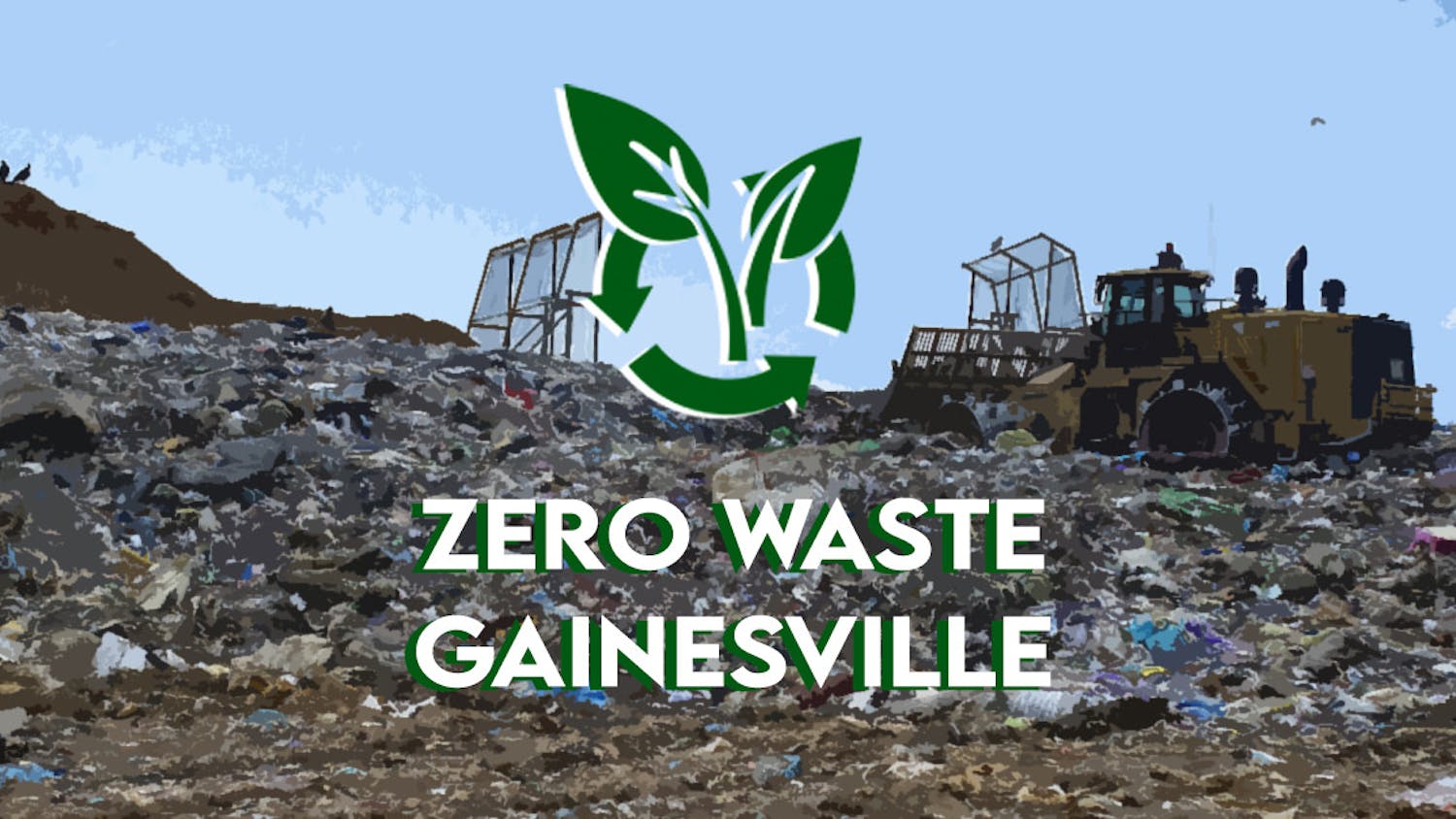Waste is the quintessential example of “out of sight, out of mind.” It’s so easy to pay no attention to how much of it we create, unless it’s your roommate’s turn to take out the garbage and they let it simmer in the bin for a few more days.
Liz Storn, a program coordinator for the UF Office of Sustainability, said that UF contributes 7,000 tons of waste (think about 1,000 adult male African elephants) to the New River landfill in Raiford, where it ends up after being processed at Leveda Brown Environmental Park here in Gainesville (Alachua County hasn’t had its own landfill since 1990).
A Miami Herald article from a few weeks ago detailed the chronicle of Monroe County’s yard waste. While South Miami-Dade is in the process of building a gasification plant, their waste will head to a town near Lake Okeechobee.
Gasification is the process of using waste to create energy that we can use. That means less waste in the landfill and less methane in the atmosphere.
According to the Herald article, one city commissioner voted against the gasification plant in Miami because she felt it was too experimental.
Sally Palmi, director of solid waste at Leveda Brown, agreed that gasification was still pretty experimental. Yet, gasification has been around since the 1790s by William Murdoch using coal to create syngas.
Methane, known chemically as CH4, is the second most prevalent greenhouse gas in our atmosphere after carbon dioxide (CO2), according to the EPA. It’s created by a number of sources, by natural gas leakage (methane is the primary component of natural gas), livestock (methane is created in the digestive tract of cows and can be released when manure is piled up), and even wetlands.
Essentially, methane is created by waste through decomposition of organic materials. While having a shorter lifespan than carbon dioxide, methane is better at trapping radiation and has 20 times the impact on climate change as carbon dioxide does. Natural processes like the nitrogen cycle in soil help remove methane from the atmosphere.
Landfills contribute to 18 percent of methane emissions from the U.S., which is the third largest source after enteric fermentation (livestock) and natural gas and petroleum systems. But, methane emissions have decreased by about 75 million metric tons between 1990 and 2012.
In Florida, three plans for waste-to-energy plants have been scrapped: one in St. Lucie, Tallahassee and Hurlburt Field. At New River landfill in Raiford—where all of Alachua County’s waste ends up—a landfill gas-to-energy (LGTE) project is being developed and won’t be running for another two years, said New River executive director Darrell O’Neal
With the university’s big goals to reduce its environmental impact and the possibility of Alachua County getting its own gasification plant, our city is looking greener and greener by the minute.
Photo caption: Waste gets pushed into trailers at Leveda Brown Environmental Park and will be transferred to New River landfill in Raiford.






